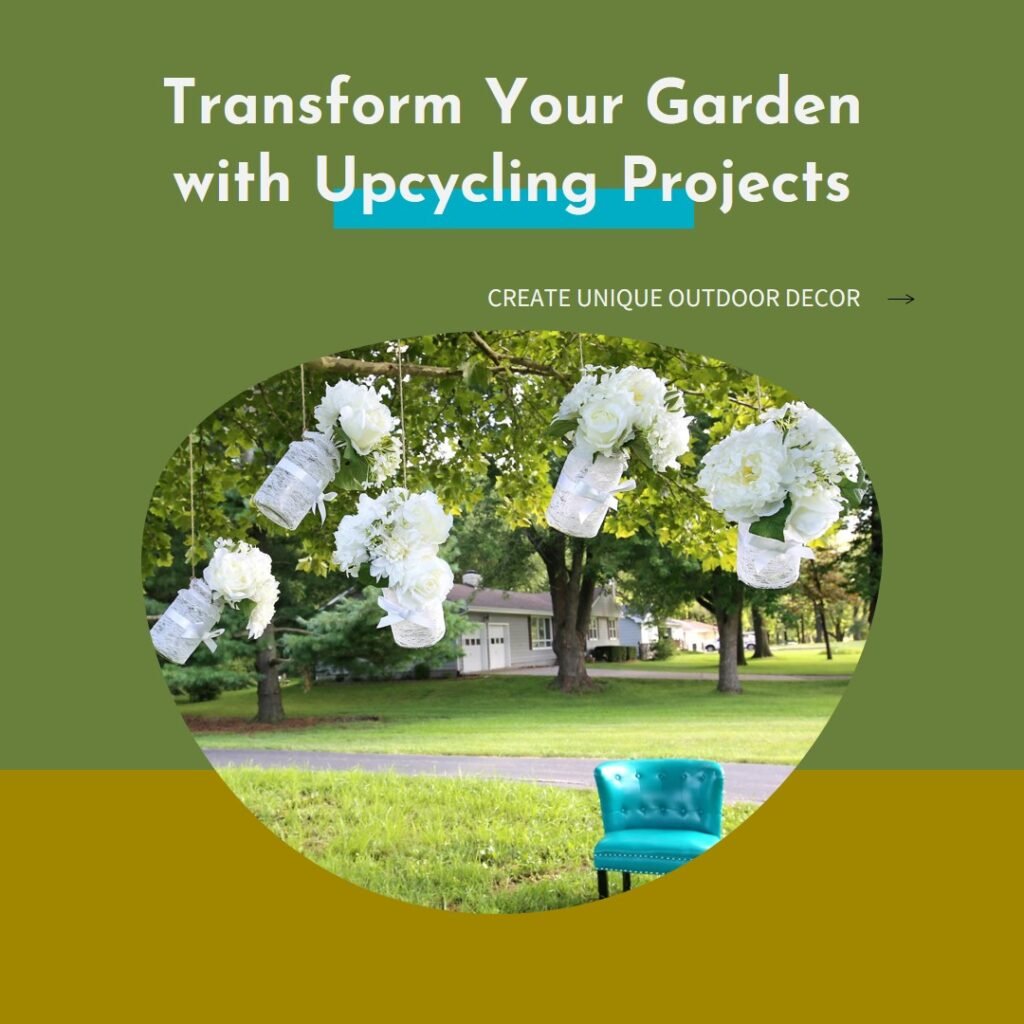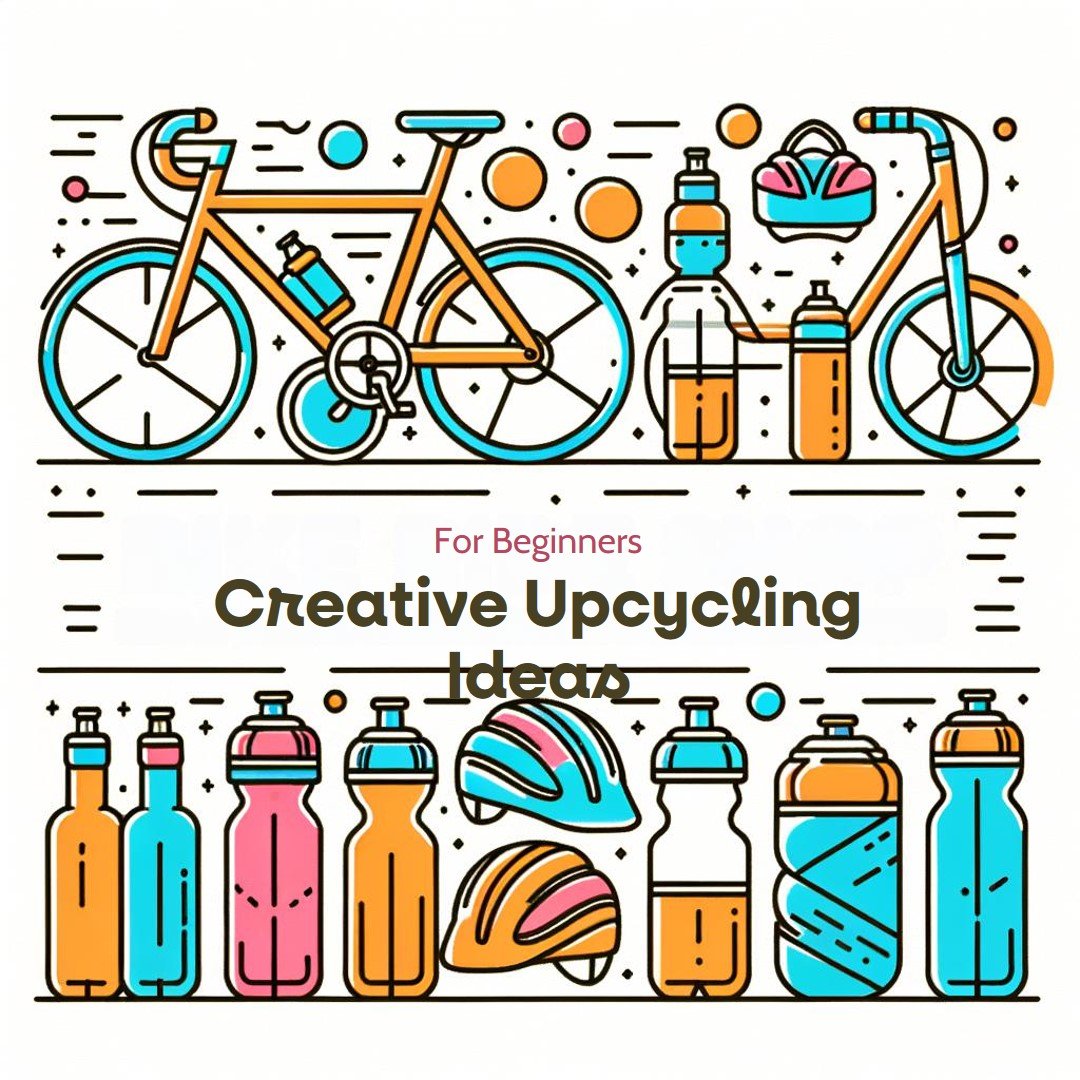Upcycling is a process of transforming old or discarded objects into something new and useful. It is a creative way to reduce waste and promote sustainability. By upcycling, you can give a new life to items that would otherwise end up in the landfill. This not only helps in reducing environmental impact but also allows you to express your creativity and save money.
What is upcycling and its benefits
Upcycling is different from recycling as it involves transforming old materials into a new product with a higher value. It helps in reducing waste and conserving resources. upcycling promotes creativity and DIY skills. It is an affordable way to decorate your home or office. Upcycled products are unique and add character to your living space. It supports local artisans and small businesses that specialize in upcycled products.
Tips for beginners in upcycling
Start with simple projects like repurposing glass jars or transforming old t-shirts into tote bags. Look for inspiration in magazines, online platforms, and thrift stores. Make sure to clean and repair the base material before starting the upcycling process. Experiment with different techniques such as painting, decoupage, or adding embellishments. Take advantage of local workshops or online tutorials to learn new upcycling techniques. Don’t be afraid to make mistakes, as they can often lead to unique and unexpected creations.
Upcycling is a rewarding hobby that not only benefits the environment but also allows you to unleash your creativity. By reimagining old objects and giving them a new purpose, you can contribute to a more sustainable future. So, why not give upcycling a try and see what amazing things you can create from the items you already have?

Creative ways to transform old furniture into New
Give an old dresser a fresh coat of paint and add new hardware for a modern look. Turn an old wooden ladder into a unique bookshelf by adding shelves between the rungs. Transform an old crib into a cozy reading nook by removing one side and adding cushions.
Convert an old door into a rustic dining table by adding sturdy legs to each corner. Repurpose an old suitcase into a stylish storage ottoman by attaching legs and adding padding. Use old bed frames to create a unique garden trellis or wall art. Turn an old dresser into a kitchen island by adding a countertop and wheels for mobility.
Upcycling techniques for beginners
Start by cleaning and sanding the furniture to remove any dirt or old finish. Use chalk paint for an easy and forgiving way to paint furniture. Try distressing the edges with sandpaper to achieve a vintage look. Add decoupage elements such as patterned paper or fabric to give the furniture a new design. Experiment with different hardware options like knobs or pulls to give furniture a new look. Incorporate upholstery by reupholstering chairs or adding fabric to drawer fronts. Embrace imperfections and let the unique character of the furniture shine through.
Upcycling furniture is a great way to save money, reduce waste, and add a personal touch to your home. With a little creativity and some basic DIY skills, you can transform old furniture into new functional pieces that reflect your style. So, don’t be afraid to get started and see what unique creations you can come up with. Happy upcycling!
Ideas for upcycling everyday items into home decor
Give an old dresser a fresh coat of paint and add new hardware for a modern look. Turn an old wooden ladder into a unique bookshelf by adding shelves between the rungs. Transform an old crib into a cozy reading nook by removing one side and adding cushions.
Convert an old door into a rustic dining table by adding sturdy legs to each corner. Repurpose an old suitcase into a stylish storage ottoman by attaching legs and adding padding. Use old bed frames to create a unique garden trellis or wall art. Turn an old dresser into a kitchen island by adding a countertop and wheels for mobility.
Easy and affordable upcycling projects for beginners
Start by cleaning and sanding the furniture to remove any dirt or old finish. Use chalk paint for an easy and forgiving way to paint furniture. Try distressing the edges with sandpaper to achieve a vintage look. Add decoupage elements such as patterned paper or fabric to give the furniture a new design. Experiment with different hardware options like knobs or pulls to give the furniture a new look. Incorporate upholstery by reupholstering chairs or adding fabric to drawer fronts. Embrace imperfections and let the unique character of the furniture shine through.
Upcycling furniture is a great way to save money, reduce waste, and add a personal touch to your home. With a little creativity and some basic DIY skills, you can transform old furniture into new functional pieces that reflect your style. So, don’t be afraid to get started and see what unique creations you can come up with. Happy upcycling!

Upcycled Fashion Accessories
- Turn an old t-shirt into a stylish tote bag by cutting off the sleeves and bottom hem, and sewing the bottom closed.
- Transform a worn-out denim jacket into a trendy backpack by cutting off the sleeves and attaching adjustable straps.
- Repurpose a vintage scarf into a statement necklace by tying it in different knots and adding beads or charms.
- Create unique earrings by cutting shapes from old leather or fabric scraps and attaching them to earring hooks.
- Use old belts to make a chic statement belt by adding studs, rhinestones, or metallic paint.
- Give old sneakers a makeover by painting them with fabric paint or adding decorative patches.
- Repurpose an old silk scarf into a headband or hair tie by simply tying it around your head or hair.
Simple upcycling projects for beginners
- Start by assessing your wardrobe and identifying items that are no longer worn or are damaged beyond repair.
- Get creative with different cutting techniques, like fringing, or adding lace or embroidery to give old clothes a new look.
- Embrace tie-dye or fabric-dyeing techniques to transform plain white garments into vibrant, unique pieces.
- Experiment with fabric paint or markers to add custom designs or quotes to t-shirts or canvas bags.
- Learn basic sewing techniques to repair or alter clothes to fit your style and body shape.
- Explore different ways to accessorize your upcycled pieces, such as adding patches, beads, or buttons.
Repurposing old clothes and accessories is not only a sustainable way to reduce waste but also allows you to express your personal style in a unique and affordable way. With a bit of creativity and basic crafting skills, you can breathe new life into your old wardrobe items and create fashionable accessories that reflect your individuality. So, gather your old clothes and let your imagination run wild.

Garden and Outdoor Upcycling Projects
Turn old tin cans into plant pots by painting them in vibrant colors and drilling drainage holes at the bottom. Repurpose wooden pallets into vertical garden planters by attaching pots or shelves to the slats. Use old wine bottles as outdoor candle holders by cutting off the bottom and inserting candles or string lights. Transform an old ladder into a rustic plant stand by placing pots on the steps.
Create a unique bird feeder by upcycling a plastic bottle, cutting holes for the birds to access the seeds, and attaching it to a tree branch. Repurpose an old tire into a sturdy outdoor ottoman by adding a cushion to the top and painting it in a fun color. Use broken ceramic dishes to create mosaic stepping stones for your garden pathway.
Tips for upcycling outdoor furniture and decor
Give old chairs a fresh look by repainting them in a bold color or adding new cushions. Use outdoor fabric remnants to create colorful pillow covers for your outdoor seating area. Repurpose an old wooden door into a unique outdoor table by attaching wooden legs and sealing it with outdoor sealer. Transform an old wooden crate into a stylish storage bench for your patio by adding a cushion and painting it to match your outdoor decor. Upgrade tired-looking outdoor lighting fixtures by spray painting them in metallic or matte black for a modern look.
Use old glass jars or bottles to create hanging lanterns by wrapping them with wire and inserting LED candles or fairy lights. By upcycling old items for your garden and outdoor space, you can add unique touches that reflect your personal style while reducing waste and saving money. Get creative and let your imagination soar as you transform discarded objects into beautiful and functional pieces for your outdoor oasis.
Fun and eco-friendly upcycling projects for children
Turn empty cereal boxes into cardboard puzzles by drawing or printing a picture on the front and cutting it into pieces. Repurpose toilet paper rolls as binoculars by covering them with colored paper or fabric and attaching a string. Create a DIY musical instrument by filling different-sized bottles with varying levels of water and decorating them with paint or stickers.
Transform old t-shirts into tote bags by cutting off the sleeves, reinforcing the bottom with stitching, and adding straps. Use egg cartons as seed starters by filling each compartment with soil and planting seeds. Repurpose empty glass jars as terrariums by layering soil, moss, and small plants inside and decorating the lid.
Safety considerations for kids in upcycling
Always supervise children during upcycling projects to ensure their safety. Use child-friendly tools and materials that are suitable for their age. Teach children about the importance of handling sharp objects and other potentially hazardous materials with caution. Remind kids to wash their hands thoroughly after handling any upcycled items, especially if paint or glue was used.
If using recycled materials that might have sharp edges or loose parts, make sure to properly secure or smooth them to prevent any injuries. By engaging children in upcycling projects, they can learn about sustainability, creativity, and repurposing while developing their fine motor skills and imagination. Make sure to choose age-appropriate projects and prioritize safety at all times.
How to choose sustainable materials for upcycling
Look for materials that are durable and can withstand being repurposed multiple times. Opt for natural and biodegradable materials whenever possible. Choose materials that require minimal energy or resources to produce. Consider using pre-owned items or materials sourced from thrift stores or online marketplaces. Avoid materials that contain harmful chemicals or contribute to pollution.
Ways to reduce waste and contribute to a circular economy
Reduce the consumption of single-use items by opting for reusable alternatives. Repair and mend items instead of throwing them away and buying new ones. Donate unwanted items to charitable organizations or community centers. Practice proper waste segregation and recycling to ensure materials are repurposed correctly. Support businesses that promote sustainable practices and offer products made from recycled materials.
Essential tools and materials for upcycling
Essential tools and materials for upcycling include a variety of items that are crucial for transforming old or unused objects into new and useful creations.
- Basic tools such as scissors, a utility knife, a hot glue gun, and a sewing machine can come in handy for various upcycling projects.
- Other useful tools include a ruler, a paintbrush, sandpaper, and a drill.
- Materials like paint, fabric, buttons, zippers, ribbons, and beads can be used to add decorative elements to upcycled items.
- Adhesives like glue, tape, and velcro can be useful for securing different parts together.
- Safety equipment such as gloves, goggles, and a dust mask should be worn when working with certain materials or using power tools.
Step-by-step upcycling process for beginners
- Start by identifying an item that can be upcycled, such as old furniture, clothing, or household items.
- Clean and prepare the item by removing any dirt, stains, or unwanted parts.
- Assess the item’s potential and brainstorm ideas for its transformation.
- Plan out the design or purpose of the upcycled item and gather any additional materials needed.
- Use the appropriate tools and techniques to modify or repurpose the item according to the planned design.
- Make any necessary repairs or adjustments to ensure the durability and functionality of the upcycled item.
- Apply any desired finishes or decorations to enhance the aesthetic appeal of the final product.
- Clean up the workspace and properly dispose of any waste materials.
- Enjoy and use the newly upcycled item in a sustainable and conscious manner.
Conclusion
Upcycling offers several benefits, including reducing waste, saving money, and expressing creativity. By transforming old or discarded items into something new and useful, individuals can contribute to a more sustainable lifestyle. Upcycling also provides a great opportunity to showcase personal style and create unique pieces that reflect individuality.
For those interested in delving deeper into the world of upcycling, there are various resources available. Websites, blogs, and social media platforms dedicated to upcycling provide inspiration, tutorials, and tips to help beginners get started and experienced upcyclers continue their creative journey. Additionally, books and magazines focused on upcycling offer in-depth information and ideas for different types of upcycling projects. Exploring these resources can expand knowledge, spark new ideas, and connect with a community passionate about sustainable and creative living.

Greetings, eco-conscious explorers! I am Arjun Bandari, a seasoned Dumpster Diving enthusiast with over a decade of expertise in uncovering hidden treasures amidst the discarded. My journey into this unconventional lifestyle began in New York, fueled by a passion for sustainability and a desire to challenge the norms of our throwaway culture.
With a bachelor’s in Enviromental Health and Safety, I seamlessly blend academic insights with practical experiences to navigate the world of Dumpster Diving. Over the years, I’ve become a recognized figure in the sustainable living community, sharing my discoveries and insights through workshops, community outreach, and various online platforms.
My commitment to promoting eco-friendly practices has garnered attention from local and regional media, earning me featured spots in publications that highlight the environmental impact of Dumpster Diving. As an advocate for responsible waste management, I have been honored with awards recognizing my contributions to the field.
In addition to my hands-on experiences, I’ve extended my reach through various published works, shedding light on the untapped potential within discarded items. Whether it’s repurposing furniture, salvaging electronics, or sharing practical tips for fellow Dumpster Diving enthusiasts, I am dedicated to inspiring a conscious and sustainable way of living.
Join me on this exciting journey as we redefine the narrative around waste, discover hidden gems, and collectively contribute to a greener, more sustainable future. Together, let’s dive into the world of Dumpster Diving and uncover the beauty beneath the surface of our disposable society.

